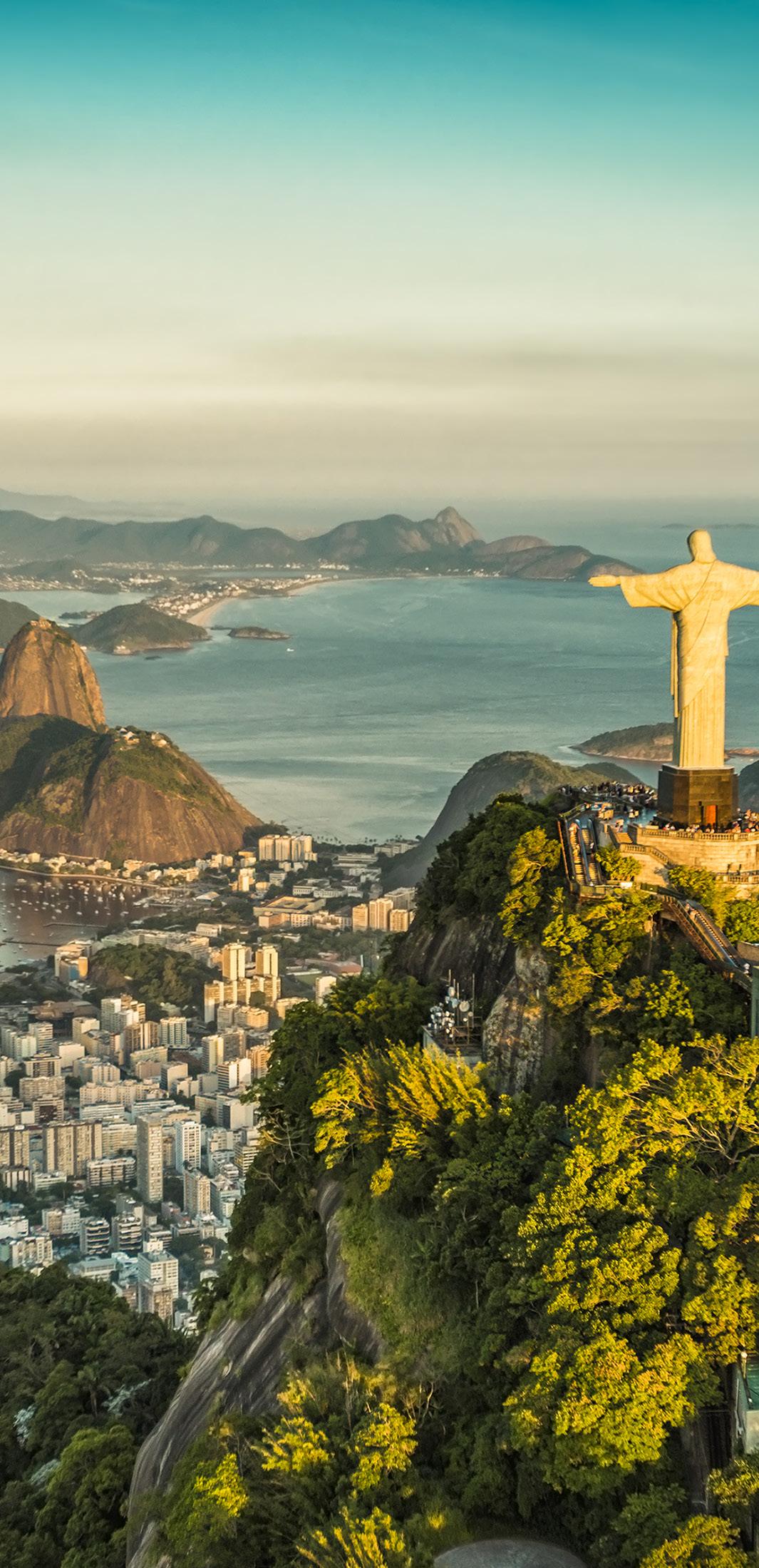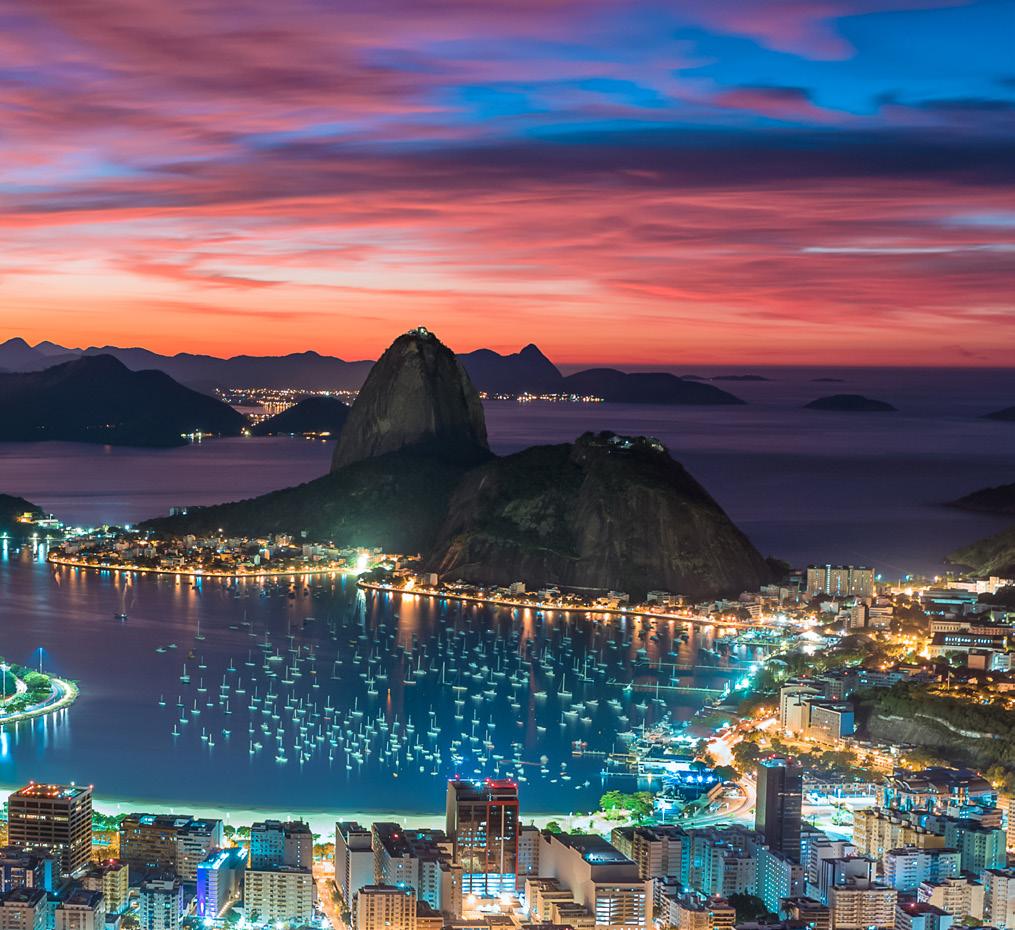
2 minute read
RIO DE JANEIRO
Rio de Janeiro is a city on the coast of Brazil, capital of the State of Rio de Janeiro, the second most populous city in the country. Founded in 1565, it served as the capital of the country for many years, until it was transferred to Brasilia, another amazing city, hopefully we can talk about it soon.
It is known for its sights, the Carnival, diverse dances, such as samba and bossa nova, and its amazing beaches, Copacabana, Ipanema and Leblon. Besides, we have Cristo Redentor, a 30 meters high Jesus Christ statue, on top of Corcovado mountain, in Tijuca Forest National park, which overlooks the city; also listed as one of the New Seven Wonders of the World. Don’t forget to book your ticket for an exact time in advance, so you can avoid lines.
Advertisement
Another landmark with a breathtaking view is Pão de Açúcar (Sugarloaf Mountain), at the mouth of Guanabara Bay, out into Atlantic Ocean. With 396 meters above, it’s known for its cableway and panoramic views; also, you can chill at Praia Vermelha, a small beach nearby.
Even though you’re inside the city, you can find many parks, such as Pedra Branca, highest point of Rio; Quinta da Boa Vista; Jardim Botânico, which shows the diversity of Brazilian Flora, it has around 6,500 species, some endangered, and it even has a research center, with the most complete botanical library in the country, our favorite part is Parque Lage.
If you want to visit more than just nature, you could go to the Sambódromo, also known as Sambódromo da Marquês de Sapucaí, Sambódromo do Rio de Janeiro or Passarela Professor Darcy Ribeiro, which is used during Carnival, maybe you’ll even catch some samba schools practicing. Every year, during Rio Carnival, those schools parade competitively, which attracts thousands of Brazilians and foreigners. The structure was designed by Oscar Niemeyer, famous Brazilian architect, built shortly after the end of the dictatorship.
Of course, we couldn’t forget about soccer, so you should definitely go to Maracanã Stadium, officially named Estádio Jornalista Mário Filho, it is managed by two local clubs, Flamengo and Fluminense. It has a capacity of 78,838 people, and it is the largest stadium in Brazil. The stadium also hosts concerts and other sports.
Getting lost in the city is so easy, and worth it, honestly. Part of the city has been designated as a World Heritage Site by UNESCO.


In Lapa District you can find Arcos da Lapa, an antique aqueduct, considered one of the biggest architectural sites from colonial times and one of the main symbols of Rio; Escadaria Seralón, located in between Santa Teresa and Lapa Districts, is a set of 215 colorful and famous steps, work of Chilean artist, Jorge Seralón, meant as a tribute to Brazilians.
As for food, we can’t recommend enough, well, trying everything, from pastéis filled with minced meat, cheese, heart of palm, chicken, between others; pão de queijo, a crispy cheese bread, we have never tried something similar; açaí na tigela, sorbet made from the purple berry, accompanied with banana, strawberry, granola, powdered milk or chocolate, etc.; feijoada, usually served on Sunday, a mix of black beans and several cuts of meat, such as ribs and sausage, served with farofa, kale and rice; and after a long day on the street, a street hot dog, it’s a sausage between bread, what makes it different are the toppings, which can be: green corn, peas, potato chips, grated cheese, quail eggs, olives and even raisins. All of the above should be complemented by a caipirinha, the cheaper the cachaça, the better; Guarana, a soft carbonated drink, and one of the most consumed; cafezinho, like an espresso, but better, or even a Brazilian beer, such as Skol or Brahma.










